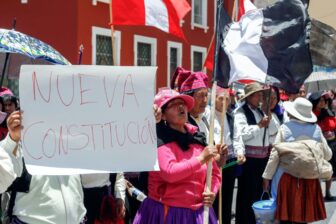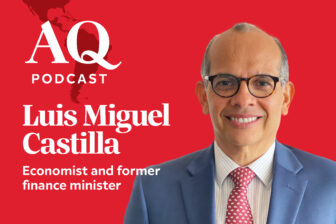For many following from abroad, the news coming out of Peru between November 2022 and February 2023 raised the possibility that Dina Boluarte—who took over as president following the December impeachment of former President Pedro Castillo—might last only a few months in office. The former vice president was facing constant, escalating protests calling either for her resignation, or for Congress to approve early elections as soon as possible, long before the end in 2026 of the term she inherited from Castillo.
That pressure seems to have vanished. Protests hit a peak in January and have waned since then. They are now mainly concentrated in Puno, a southern region of the country that shares a border with Bolivia, where Castillo and Boluarte obtained 89% of the vote in 2021. But even in Puno there are already signs of protest fatigue. Bloomberg has reported that Puno’s economy will shrink 5% this year while the rest of the country grows 1.9%, and locals are growing weary of the toll of constant strikes and blockades. Recent polling shows that 43% of Peruvians believe protests will not bring about early elections, compared to 38% in February. Similarly, 53% think protests they will not force Dina Boluarte to resign.
Congress has also tabled all bills related to having early elections: In mid-March, parliamentarians rejected for the fifth time the possibility of having elections at the end of this year. A motion to initiate impeachment proceedings against her, presented by Peru Libre and other leftist caucuses, was rejected last week, lacking sufficient support among other political forces.
It’s not that Boluarte has managed to become more appealing to most Peruvians in the last few months. Her approval rating is at only 15%, and her government’s recent response to the deadly rainstorms, landslides and floods in early March in the north of the country have been widely criticized. What, then, explains her survival so far? As always in Peru, the answer lies in the weak organization of its political class across the entire political spectrum. On the left, parties like Peru Libre—which brought Castillo to power—and Nuevo Peru have proven incapable of articulating social movements to achieve their goals, even when the population has been highly mobilized.
As I have written in these pages, during the protests these parties’ main objective was to call for a constitutional assembly, a long-held ambition. This was shortsighted for two reasons. First, the political conditions to rewrite the constitution were simply not there: there was never a broad agreement among protesters on this question. Second, had they not tied the issue of the constitutional assembly to supporting early elections, they probably could have come to an agreement with other forces in parliament to hold elections in 2024.
As for parties on the right, they are mainly concerned with keeping their seats in Congress, and so tolerating Boluarte as president is the best immediate option. She was never part of Castillo’s inner circle and is considered more pragmatic and less erratic than her predecessor. Both the military and the security forces firmly support the government, having followed orders in many cases to repress protesters violently.
In fact, should current factors hold, it’s possible that Boluarte will manage to stay in office until 2026, but it’s hard to say that this would be in Peru’s best interest. Her government has shown that it is willing to deploy brutal force to quell social unrest. According to Amnesty International, since the beginning of the protests last year, there have been 46 cases of possible human rights violations; the death toll so far is 60.
More violence will further erode the country’s deeply fragile democracy. And Boluarte is not an effective leader with a clear agenda. Without any real support in Congress, her presidency will likely achieve little progress in political, economic or social policy. On the flip side, a new president is no guarantee of improvement, as Peru’s recent history has shown. Perhaps Boluarte’s unhappy presence will buy time for Peruvians to have better options three years from now.









